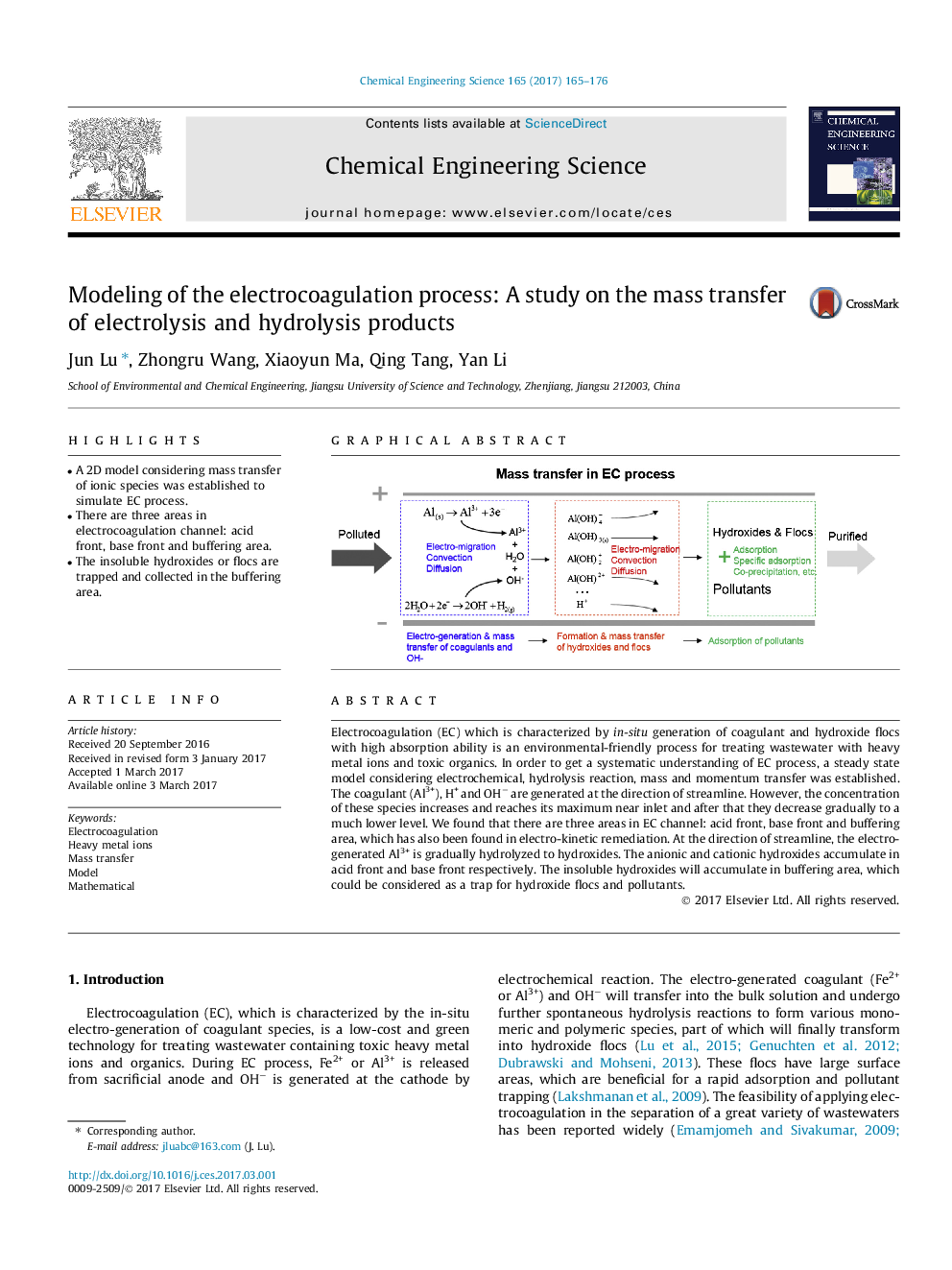| Article ID | Journal | Published Year | Pages | File Type |
|---|---|---|---|---|
| 6467474 | Chemical Engineering Science | 2017 | 12 Pages |
â¢A 2D model considering mass transfer of ionic species was established to simulate EC process.â¢There are three areas in electrocoagulation channel: acid front, base front and buffering area.â¢The insoluble hydroxides or flocs are trapped and collected in the buffering area.
Electrocoagulation (EC) which is characterized by in-situ generation of coagulant and hydroxide flocs with high absorption ability is an environmental-friendly process for treating wastewater with heavy metal ions and toxic organics. In order to get a systematic understanding of EC process, a steady state model considering electrochemical, hydrolysis reaction, mass and momentum transfer was established. The coagulant (Al3+), H+ and OHâ are generated at the direction of streamline. However, the concentration of these species increases and reaches its maximum near inlet and after that they decrease gradually to a much lower level. We found that there are three areas in EC channel: acid front, base front and buffering area, which has also been found in electro-kinetic remediation. At the direction of streamline, the electro-generated Al3+ is gradually hydrolyzed to hydroxides. The anionic and cationic hydroxides accumulate in acid front and base front respectively. The insoluble hydroxides will accumulate in buffering area, which could be considered as a trap for hydroxide flocs and pollutants.
Graphical abstractDownload high-res image (102KB)Download full-size image
